Packaging materials
Find out everything you need to know about sustainable packaging materials.
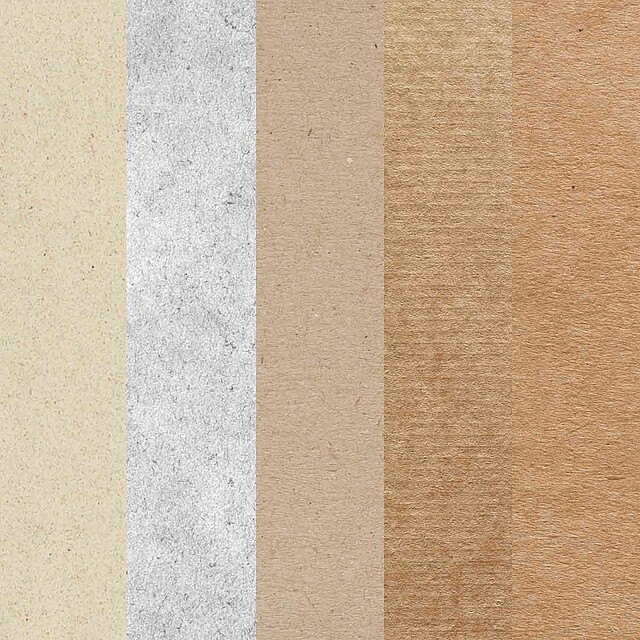
Paper-based packaging materials
What are packaging materials?
Packaging materials are the basis for packaging. They protect, preserve and present products during transport, storage, sale and use. Packaging materials include paper, corrugated cardboard, solid cardboard, plastics, glass, metal and composite materials. These materials offer excellent protection against physical damage and are versatile. Paper-based packaging is particularly environmentally friendly and optimally recyclable. It is also lightweight, cost-effective and customisable, making it suitable for a wide range of products.
Purpose and functions of packaging materials
Packaging materials protect products from physical damage and external influences. Corrugated cardboard and paper-based materials help to preserve the shelf life and quality of food and delicate goods, among other things. They facilitate transport and storage by securely bundling and stabilising products.
Paper-based packaging also offers large areas for information and brand presentation, making it an effective means of communication. Its sustainability and recyclability reduce environmental impacts and make it a preferred choice for environmentally conscious businesses and consumers.
What types of sustainable packaging materials are available?
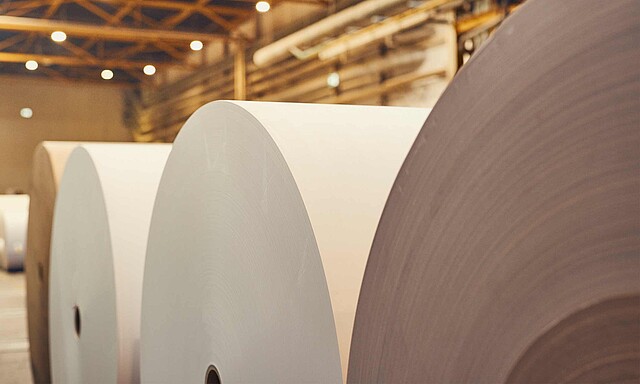
Paper for the production of corrugated cardboard
Paper
Paper as the basis for the production of corrugated cardboard differs from the products from which it is produced and composed. Waste paper, kraftliner, testliner and semi-chemical pulp are just some of the common terms for paper types used in corrugated cardboard production. Each of these paper types has special properties that affect the strength, flexibility and recyclability of corrugated cardboard. Waste paper is often used for its environmental friendliness and cost-efficiency, while kraftliner is known for its robustness and durability. Numerous paper combinations as packaging material enable the best possible composition of the corrugated cardboard and form the basis for effective product protection.
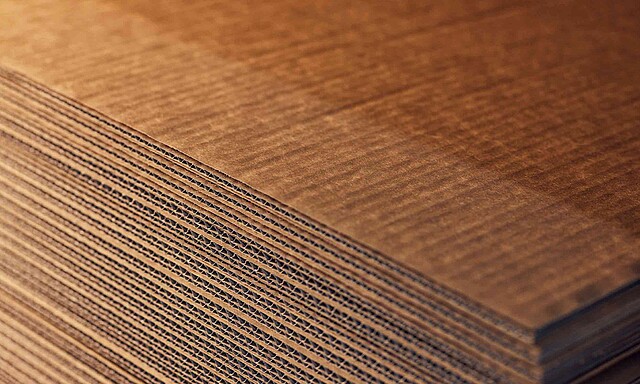
Corrugated cardboard - the sustainable packaging solution
Corrugated cardboard
Corrugated cardboard as a packaging material is often made from recycled paper and is fully recyclable, making it a sustainable packaging material. It offers excellent protection during shipping and storage and is robust enough to protect heavy and delicate products. Corrugated cardboard boxes are lightweight and can be folded flat, making transport and storage easier. They are versatile and can be used for a wide range of products, from food to electronics. Customised printing options create high-impact communications channels. As a circular product, corrugated cardboard also supports an environmentally friendly future thanks to its excellent recyclability and resource conservation.
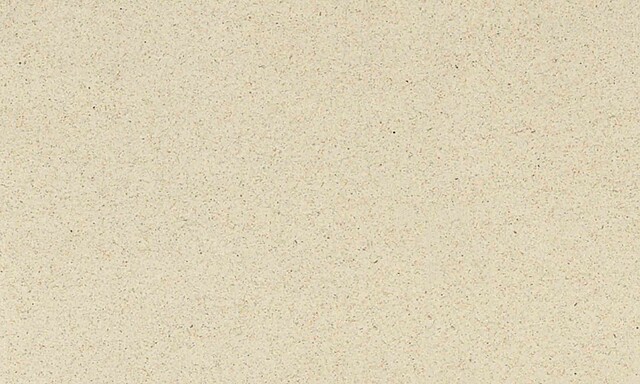
Grass paper can be identified through its lighter colour and specific structure
Grass corrugated cardboard
Grass corrugated cardboard is one of the newer sustainable packaging materials and is a fantastic addition to traditional corrugated cardboard. Thanks to its specific structure and natural basis, grass corrugated cardboard is ideally suited for packaging and secondary placements of sustainable food products. Fruit and vegetable bowls or trays made from grass corrugated cardboard are often found in retail outlets. And this trend is continuing. THIMM has already developed some packaging and displays made from grass corrugated cardboard which are used for sales promotional purposes in retail outlets.
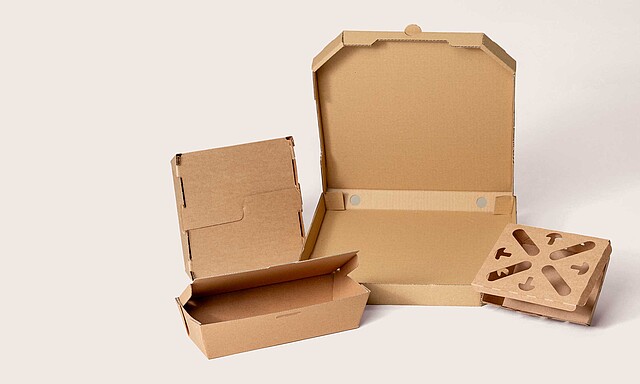
Direct food contact with foodWave®
foodWave®
foodWave® is a sustainable packaging material specially developed for the food industry. It is made from 100% recyclable fresh fibres that are safe for direct food contact. foodWave® packaging is lightweight, robust and can be customised to meet the specific requirements of the food industry. With our special coating, the material is grease and oil-resistant and ideal for moist or greasy foods. It remains easily recyclable and can be disposed of with waste paper when completely emptied. Using foodWave® as a packaging material helps to reduce the environmental impact of plastic food packaging.

The natural product of wood as a packaging material
Wood
Wood is a renewable raw material and is the basis of numerous packaging materials such as paper, solid cardboard and corrugated cardboard. Fresh fibres are obtained from windfall and thinning timber, a result of sustainable forest management. This promotes sustainable forestry and conserves natural resources.
Wooden pallets, such as Euro pallets, are another example of the versatile use of wood in the packaging industry. They are robust and reusable, making them an environmentally friendly choice for transporting and storing goods. Their use in pallet pools maximises their efficiency and further increases sustainability.
The main function of packaging is to protect your products.
To ensure this protection it is essential to find the optimum combination of packaging materials. Paper-based materials such as corrugated cardboard, solid cardboard and padding solutions offer excellent protection by securely holding the contents in place and protecting them from damage.
-
Environmental awareness
Paper-based packaging materials are easily recyclable and biodegradable, reducing environmental impacts and promoting sustainable practices.
-
Versatility and adaptability
Paper-based materials can be easily adapted to different product sizes and shapes, making them ideal for a wide range of applications.
-
Cost efficiency
Paper-based packaging is usually cost-effective, making it an economical choice for businesses of all sizes.
Packaging as a brand ambassador
Packaging plays a crucial role in brand presentation, as it gives the first impression of your products. Appealing and informative design can help packaging attract consumers’ attention and strengthen brand identity.
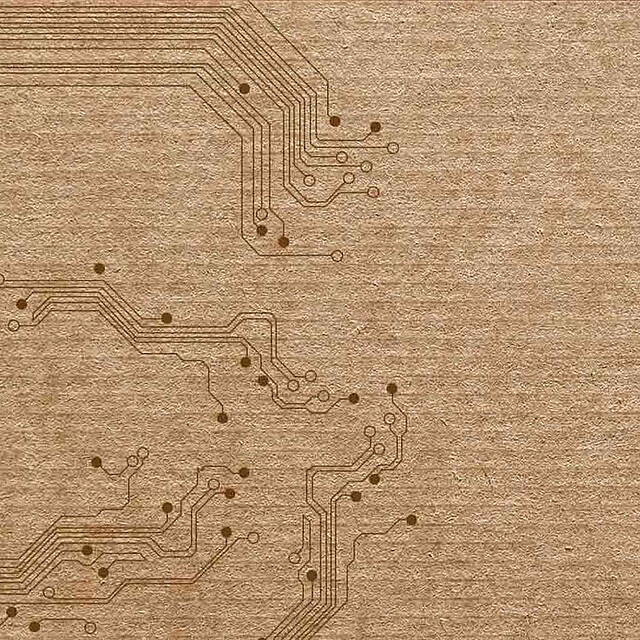
The future of packaging materials
The future of packaging materials is increasingly determined by a focus on sustainability and technological innovation. With growing environmental impacts and increasing consumer demand for environmentally friendly solutions, companies are turning to sustainable materials more and more.
Corrugated cardboard: central material for sustainable packaging solutions
Corrugated cardboard, which is made from recycled paper and is fully recyclable, plays a key role in this. Corrugated cardboard offers excellent protection and is robust enough to safely package a wide range of products. Its versatility and easy and space-saving transportation make corrugated cardboard a preferred choice for environmentally conscious businesses.
In the future, the corrugated cardboard industry will continue to innovate: advances in technology also enable the development of intelligent packaging that can monitor the condition and shelf life of products. In the Internet of Packs, packaging will be digitally connected so that it can exchange and monitor data in real time, increasing supply chain efficiency.
These developments will help to make the packaging industry even more sustainable and reduce its environmental footprint.
Do you have any questions about packaging materials?

Get in touch with us:
THIMM Group
+49 5551 703 0
mail@thimm.de